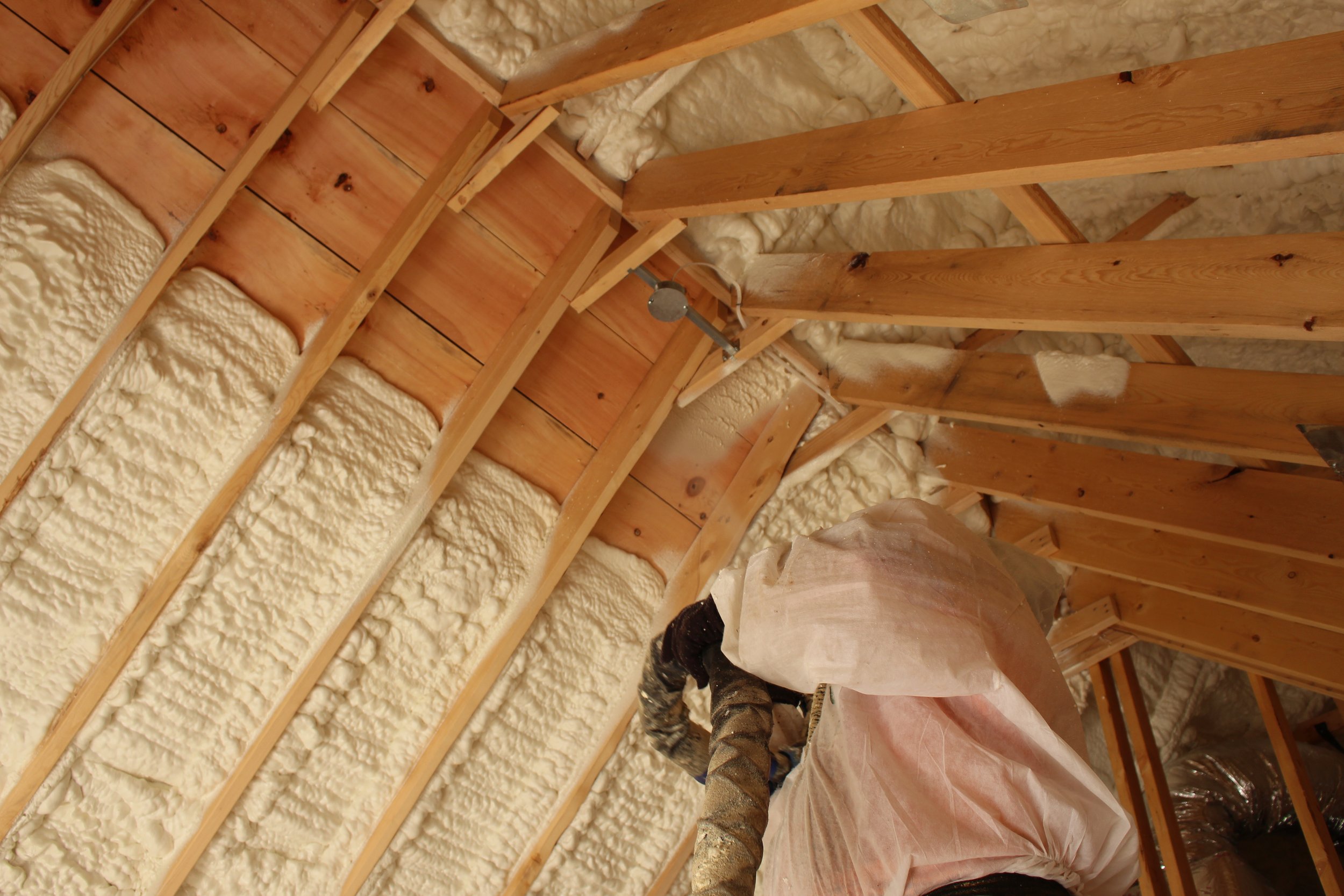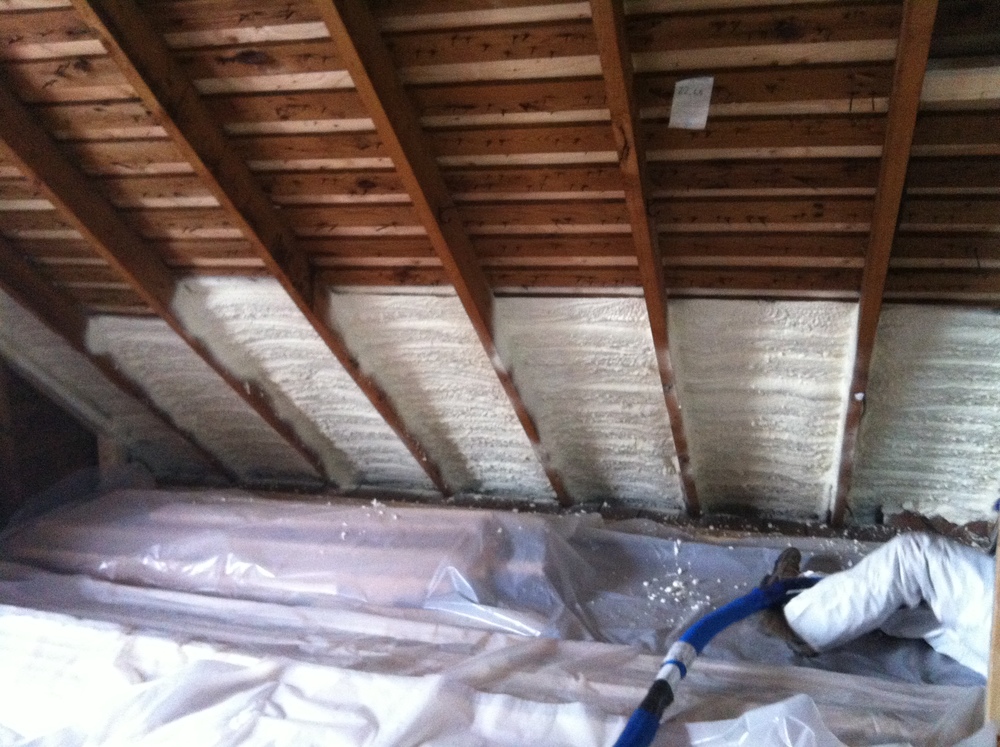Typical Misconceptions Concerning Spray Foam: Debunking the Misconceptions
Typical Misconceptions Concerning Spray Foam: Debunking the Misconceptions
Blog Article
Spray Foam: The Ultimate Solution for Air Sealing and Insulation
Spray foam insulation has actually become a leading service for reliable air sealing and thermal insulation, supplying a special mix of residential or commercial properties that establish it besides traditional approaches. Its ability to expand and load voids makes it especially reliable in avoiding air leak, which can substantially impact energy effectiveness. Understanding the full range of its advantages, setup procedures, and contrasts with various other insulation kinds is important for making notified choices. As we explore these aspects, the implications for both new building and constructions and retrofits come to be significantly substantial. What elements should influence your choice?
What Is Spray Foam?
Spray foam is a functional insulation material that combines the concepts of air securing and thermal resistance to improve power performance in structures. Composed mainly of polyurethane or various other comparable compounds, spray foam is used as a fluid that increases upon contact with surfaces, developing a strong, continual layer of insulation. This unique residential property enables it to load spaces, cracks, and gaps that conventional insulation products might neglect, giving a superior air seal.
There are 2 main kinds of spray foam: open-cell and closed-cell. Open-cell spray foam is lighter and a lot more flexible, offering superb noise absorption and a reduced R-value per inch - Spray Foam. In comparison, closed-cell spray foam is denser, offering a greater R-value, wetness resistance, and added structural stability to developing components
The application procedure typically includes specific devices, ensuring a smooth application that sticks to different substrates, consisting of concrete, metal, and wood. This adaptability makes spray foam ideal for both new constructions and retrofitting existing structures. Its capacity to develop a closed obstacle substantially adds to lowering power intake and improving indoor air top quality, thereby making it a favored option amongst homeowners and contractors alike.
Advantages of Spray Foam Insulation
Among one of the most substantial advantages of spray foam insulation is its phenomenal capability to create a constant air obstacle, which effectively minimizes energy loss. Unlike typical insulation materials, spray foam expands to fill cracks and gaps, ensuring that air leak is substantially reduced. This particular not just boosts power effectiveness but likewise results in reduce utility bills in time.
Additionally, spray foam insulation offers premium thermal resistance, adding to an extra secure interior atmosphere. Its high R-value per inch enables effective insulation in confined rooms, making it excellent for attic rooms, wall surfaces, and crawl spaces. Additionally, the moisture-resistant residential properties of spray foam aid avoid mold and mildew and mold development, promoting much healthier living problems.
Another crucial advantage of spray foam insulation is its sound-dampening top qualities (Spray Foam). It efficiently reduces sound transmission between areas, producing a quieter and more comfy home atmosphere. The resilience of spray foam additionally sticks out, as it does not sag or clear up gradually, maintaining its performance throughout its life-span
Just How Spray Foam Works
Comprehending just how spray foam insulation functions is important for appreciating its effectiveness in air sealing and thermal resistance. Spray foam insulation is composed of two key elements: isocyanate and polyol material. When these parts are mixed, they undertake a chain reaction that creates the material to broaden swiftly, producing a thick foam that loads tooth cavities, fractures, and voids.
As the foam increases, it complies with surface areas, creating an airtight seal that substantially lowers air infiltration. This characteristic makes spray foam insulation extremely efficient at protecting against drafts and wetness infiltration, which can result in energy loss and find out here now damages with time. In addition, the closed-cell version of spray foam offers remarkable thermal resistance as a result of its inflexible framework, successfully reducing warm transfer.
The special homes of spray foam enable it to satisfy uneven surface areas, making certain thorough coverage and a smooth barrier. As a result, spray foam insulation not only enhances energy performance yet also adds to boosted interior air high quality by minimizing the buildup of allergens and toxins. Eventually, comprehending the mechanics behind spray foam underscores its role as an exceptional choice for insulation and air securing in both industrial and domestic applications.
Setup Process Review

Before setup, the room should be adequately cleaned and prepped, making certain that surfaces are without particles, dampness, and dirt. This step is important due to the fact that contaminants can compromise bond and general efficiency. Once the area is prepared, the application involves mixing both parts of the spray foam, which expands upon get in touch with and fills up spaces successfully.
Educated experts ought to perform the installment, making use of specialized equipment to guarantee uniform coverage and optimal density. Safety safety measures, including wearing protective gear and ensuring correct air flow, are important during this procedure. After application, the foam typically treatments promptly, creating a strong barrier that enhances power performance.
Comparing Spray Foam to Conventional Insulation
When examining insulation options, spray foam insulation stands out in contrast to standard materials such as fiberglass and cellulose. Unlike fiberglass and cellulose, which can enable air infiltration, spray foam increases upon application, filling voids and gaps to create a closed seal.
Additionally, spray foam supplies a higher R-value per inch than typical insulation types, supplying more reliable thermal resistance in a thinner profile. This particular is particularly helpful precede with restricted cavity depth. Spray foam is resistant to dampness and mold growth, which can be a substantial concern with cellulose and fiberglass, especially in moist environments.
Nevertheless, spray foam insulation typically brings a greater upfront expense than its typical counterparts. House owners have to weigh this preliminary financial investment versus long-term energy cost savings and efficiency advantages. Ultimately, while both insulation types offer their purpose, spray foam becomes an advanced option for i was reading this modern insulation needs, especially in regards to air securing and thermal efficiency.

Final Thought
In summary, spray foam insulation represents an extremely effective service for achieving optimal air sealing and thermal resistance. Its unique buildings, consisting of dampness resistance and noise dampening, make it appropriate for different applications in both new constructions and retrofitting projects (Spray Foam). The first expenses may be greater compared to traditional click here for more insulation products, the long-lasting benefits, such as substantial energy savings and improved indoor air high quality, warrant the financial investment and emphasize its worth in contemporary structure methods.
Spray foam insulation has emerged as a leading option for effective air securing and thermal insulation, using a distinct mix of residential properties that set it apart from typical techniques.Spray foam is a functional insulation product that combines the concepts of air securing and thermal resistance to improve power effectiveness in structures.When examining insulation options, spray foam insulation stands out in comparison to typical materials such as fiberglass and cellulose. Inevitably, while both insulation types offer their purpose, spray foam emerges as an extra sophisticated remedy for contemporary insulation needs, specifically in terms of air sealing and thermal effectiveness.
In summary, spray foam insulation represents a highly efficient service for accomplishing ideal air securing and thermal resistance.
Report this page